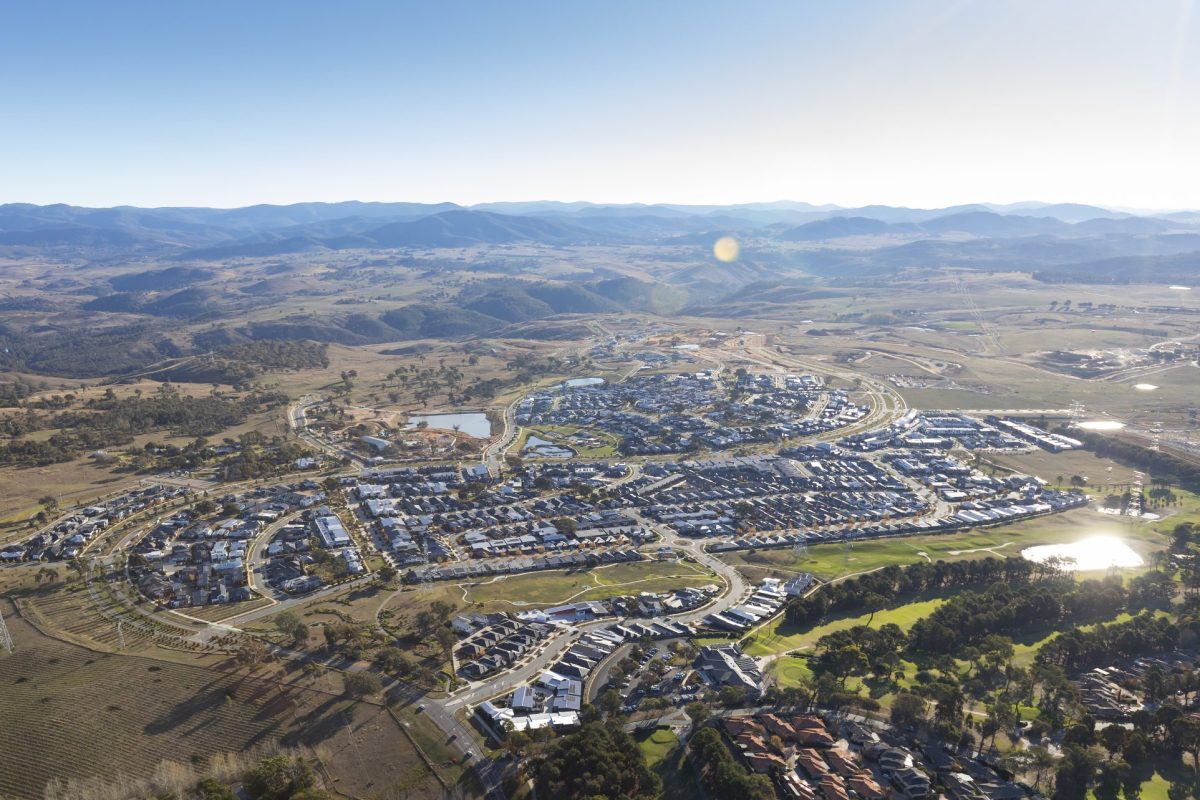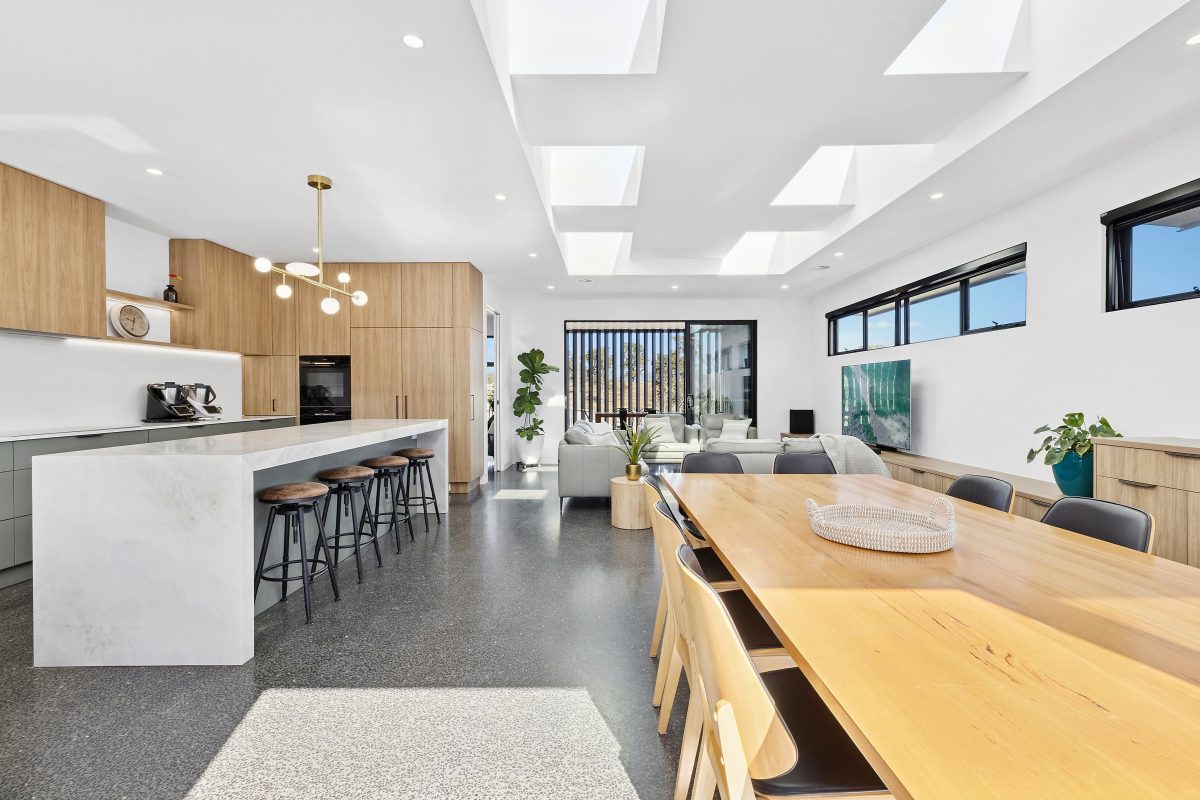Getting home sooner
WORDS Catherine Carter
The current housing market statistics are not painting a great picture for first home buyers. Last year, fuelled by record-low interest rates and federal and state subsidies, first home buyers took out mortgages at numbers not seen since the peak of the global financial crisis. Canberra’s house prices broke record after record, finally posting an 18.1% annual increase in value. The median house, according to CoreLogic, is now valued at $770,873. And even though lending to first home buyers surged by 66% in 2020, rising prices are putting home ownership further out of reach for some.
It now takes the average first-home buyer couple in Canberra six years to save the 20% deposit needed for an entry-priced home—nine months longer than it did a year ago, and 20 months longer than five years ago.
Canberra is also our nation’s most expensive city to rent. People typically shell out $668 each week for a house and $521 for a unit.
There is also an alarming trend that shows a dramatic decrease in home ownership since 1971: from 64% to 50% for Australians aged 30 to 34, and 50% to 37% for Australians aged 25 to 29.
The cost of buying a home has increased by 130% over two generations and many first home buyers are now turning to their parents for help.
According to analysis by Digital Finance Analytics, the Bank of Mum and Dad is now Australia’s ninth biggest
mortgage lender, with parental contributions averaging more than $89,000 – an increase of nearly 20% in the past 12 months.
These statistics tell a story of structural inequality that is very hard to shift. What we need are big, bold ideas and new solutions, not band aids.
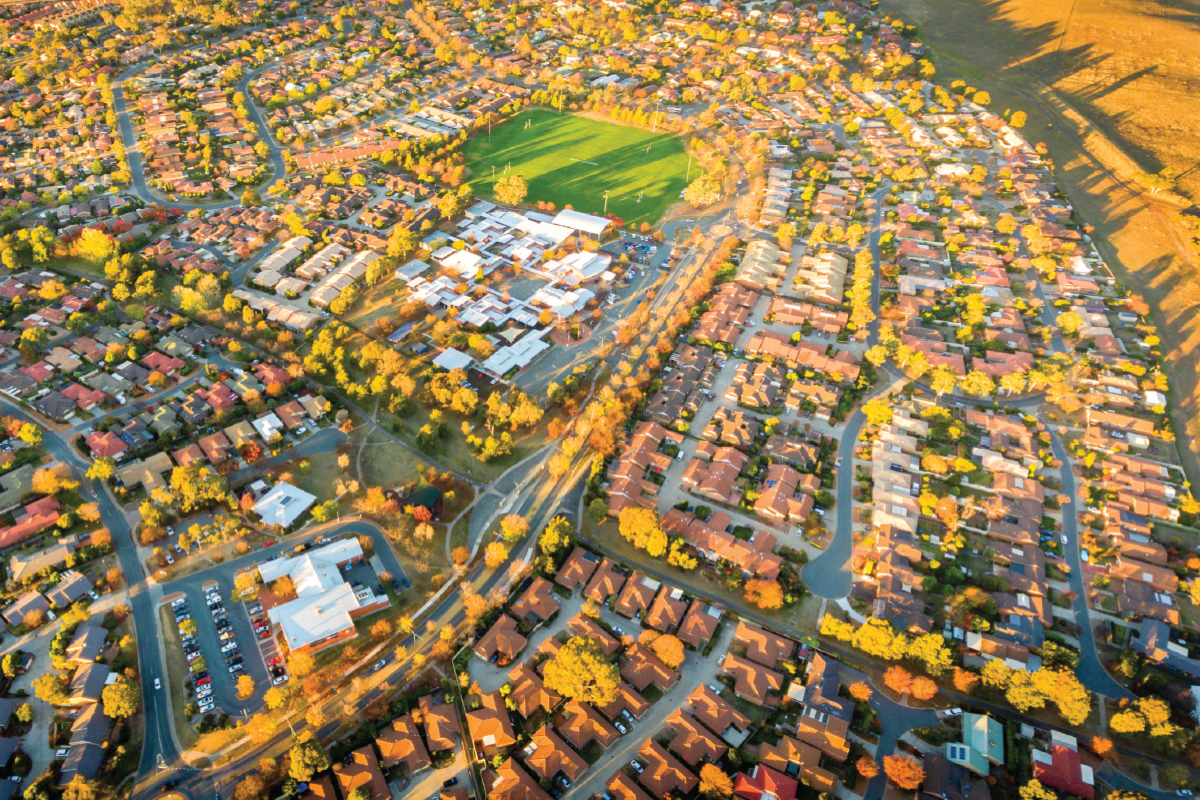
“What we need are big, bold ideas and new solutions, not band aids.”
TOWARDS A FLEXIBLE FUTURE
One smart solution that is being pioneered in Canberra are Ginninderry’s Flexi-living Homes.
From the earliest days of development, when the Riverview Group and ACT Government sat down at the drawing board, housing affordability was a central plank of the Ginninderry project, says David Maxwell, Managing Director of Riverview Developments. “We set a goal up front that 15% of all homes would be affordable,” he explains.
The Flexi-living model is the “something in between” an apartment and a traditional home. Separately titled, but with the convenience and low-maintenance lifestyle of an apartment, Flexi-living Homes fill an important gap, David says.
“Flexi-living Homes are for people entering the housing market. We have clear criteria. We will only sell to home buyers with a family income of less than $120,000 a year, and the owners must live in it for three years.
“We agree on a price, contracts are exchanged, and the owners pay a 5% deposit. They don’t pay another cent until settlement—this means you don’t have to make progress payments throughout the process.”
And because Riverview acts as the developer of the project, the model “helps us maintain quality of the built form”. The first tranche of 70 Flexiliving Homes has been delivered and the next tranche is expected in 2021.
Housing affordability: A hard nut to crack
While developments like Ginninderry are thinking outside of the box to come up with creative solutions, many other clever people are putting their minds to the affordable housing problem. New creative finance products are entering the market each week. Innovative construction techniques—like modular construction and 3D printing—can improve productivity and lower costs. Removing regulatory barriers and planning roadblocks can get homes to market quicker. But unravelling the interconnected threads that have us tied in knots is not easy. Here are just a few illustrations of why housing affordability is a hard nut to crack.
1. Redefining renting
Build-to-rent is residential accommodation held over the longterm by an institutional owner. While new to Australia, the asset class is well-established in the United States, where it makes up 20% of rental accommodation in some markets. Because the owners are in it for the long term, they are incentivised to look after their tenants. Early movers in Australia have delivered apartment projects where tenants can paint the walls, put up pictures, keep pets and don’t have to stump up for a bond.
YWCA Canberra’s chief executive officer Frances Crimmins says build to- rent can address the growing group of people who fall through the cracks—those who earn too much to be eligible for public housing but who can’t keep up with Canberra’s skyrocketing private rental prices. “We were the original build-to-renters before it became trendy,” Frances says. She’s currently in conversations with the ACT Government and other community housing providers, and has made clear recommendations about how to get build-to-rent off the ground in Canberra. “But it’s the price of land that is the issue for us”.
2. Architects take action
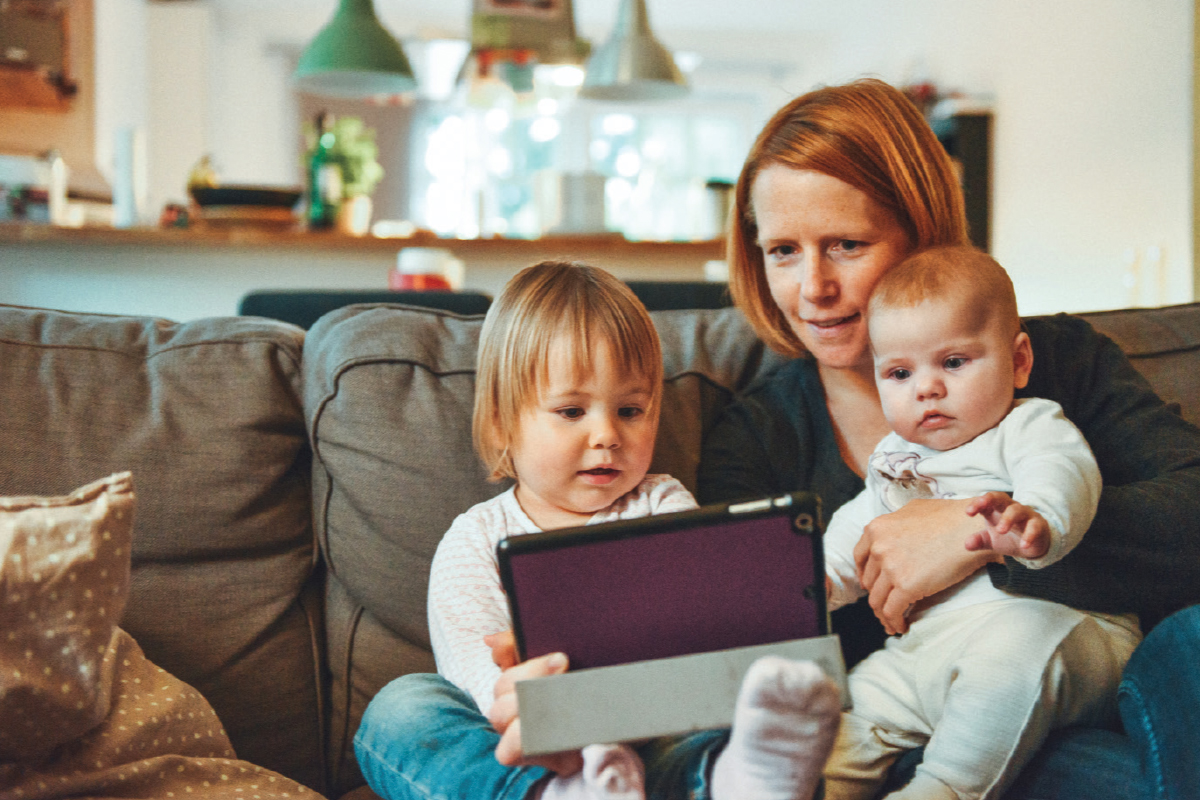
Nightingale Housing has attracted headlines in recent years for its architect-led model. Profits, capped at 15 per cent, kept the purchase price of apartments affordable, and each project is pre-sold by ballot. But the model proved impossible to scale, with architects often unable to raise the funds needed to get projects off the ground. With just a handful of projects completed, Nightingale Housing now partners with landowners, like faith-based organisations, to develop buildings with a percentage allocated as affordable housing. “We’ve looked at the Nightingale model as we’ve explored housing affordability options,” says David Maxwell. “Once we build a group centre, this option will be more feasible.”
3. Tax treatments
Governments need tax to deliver services and maintain our quality of life. The problem is some taxes, like stamp duty, are inefficient and often prevent people from ‘rightsizing’ to suit their stage of life. After nearly a decade of transitioning to a broad-based land tax, the ACT has the lowest stamp duty rate in the country. However, the National Housing Finance and Investment Corporation has recently highlighted the challenge for policymakers. “Despite reductions in stamp duty rates during the transition, stamp duty revenue collections haven’t declined much, while residential land tax revenue has continued to grow.” The ACT Government continues to look for solutions. From 1 July 2021, stamp duty was scrapped for off-the-plan purchases up to $500,000—a saving of up to $10,000 on a new apartment or townhouse, whilst eligible first home buyers in the ACT pay no or reduced stamp duty.
4. Vacant office to vibrant living
Transforming empty offices into affordable housing makes sense, especially as more Canberrans work from home. Some adaptive-reuse projects have taken shape around the nation’s capital, reimagining old offices as warehouse-style apartments, student accommodation, hotels or retirement living. While adaptive reuse offers many advantages, including reducing waste to landfill and carbon emissions, not all buildings are suitable for conversion. Meeting the National Construction Code can prove a headache with some older buildings. Other projects can come at a hefty price tag, putting them well outside the affordability equation.
According to analysis by Digital Finance Analytics, the Bank of Mum and Dad is now Australia’s ninthbiggest mortgage lender, with parental contributions averaging more than $89,000 – an increase of nearly 20% in the past 12 months.
GOVERNMENT ACTION
More than half of renters across Australia are now paying more than 30% of their income in rent—the key threshold for housing stress. One in six pays more than 50%, having no money left over to save at the end of the month.
These are the sorts of statistics that keep Rebecca Vassarotti MLA up at night. As the ACT Minister for Homelessness and Housing Services, and the Minister for Sustainable Building and Construction, Rebecca works at what she calls the “pointy end of housing”.
For nearly two decades Rebecca saw how housing—or lack of it— reinforced social disadvantage. She was the executive director of YWCA in Canberra for nearly a decade, led the Australian Council of Social Services for a time, and spent seven years sitting on the board of Community Housing Canberra.
The pandemic has exposed and exacerbated existing fault lines in our community. “We’ve always had low rental vacancy rates and affordability in Canberra, but I don’t think anyone could have expected this current situation and it has put incredible stress across the city,” she says. Rebecca is now responsible for a portfolio of social housing assets that are home to 20,000 tenants across the ACT.
She is also leading an ambitious agenda to transform the ACT’s social housing stock. Co-housing and build-to-rent demonstration projects are taking shape. An extra $18 million has been earmarked for specialist homelessness services over the next four years and 400 additional public housing dwellings have been promised by 2025. The ACT Government has also pledged to simplify our planning system, which will make it easier for projects by private developers to get off the ground.
“There’s a real recognition by the ACT Government that there’s work to be done. There’s a very active conversation underway with the community, with the federal government, and with industry about the roles they can play,” Rebecca says.
New challenges require us to think differently about age-old problems, and Rebecca applauds industry efforts to embrace innovative models, pointing to Ginninderry’s Flexi-living Series as an example. But the task is an urgent one that requires the efforts of Canberrans across sectors and specialisations.
“Housing affordability is an issue that government won’t solve on its own. We need to be innovative, to embrace technology and different thinking, and to have deep conversations across our city. It’s a collaborative effort.”
First home dreams realised
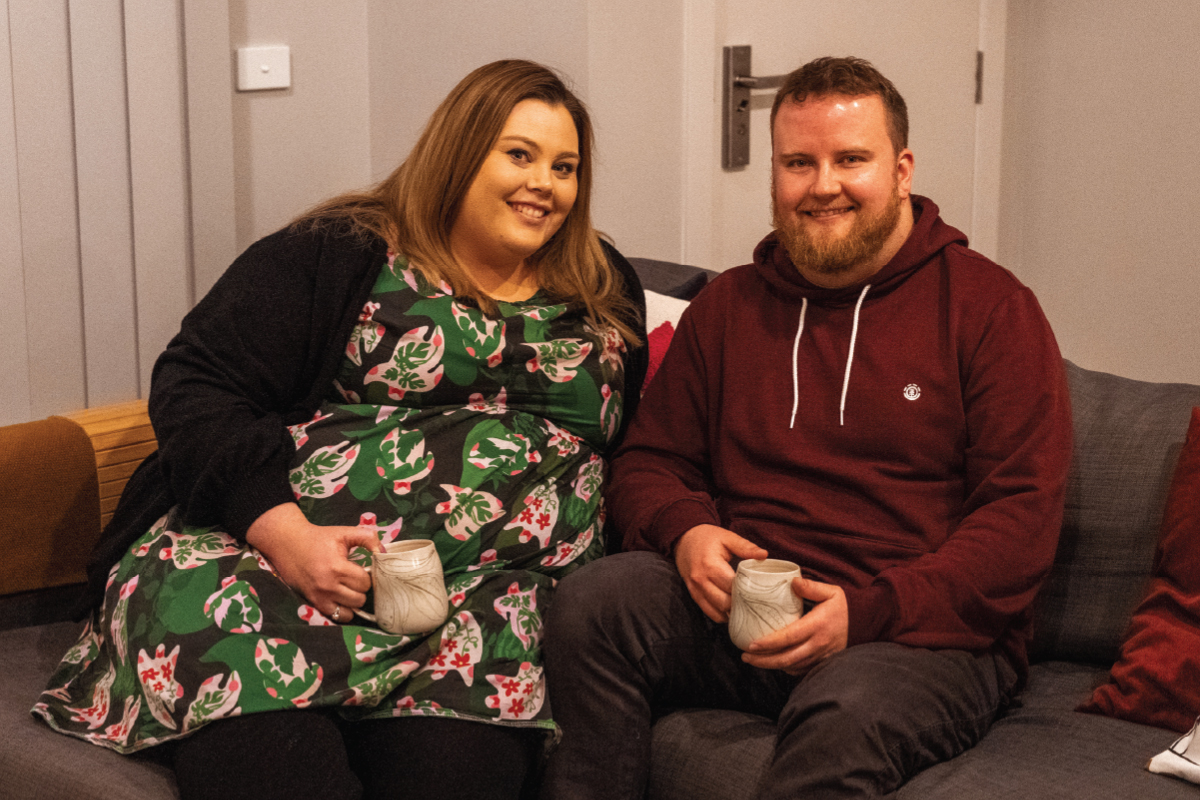
Molly & Peter
We always thought about living in the Belconnen area, but we couldn’t realistically see any way of getting into the market. One day my parents visited Ginninderry and told us about the Flexi-living Homes. When we had a look at the plans, we just thought they were really cool and would suit us, and the possibility of buying a home was suddenly more achievable. We’ve been here over a year now and there is no way we would have a house by now if we hadn’t come across this option.
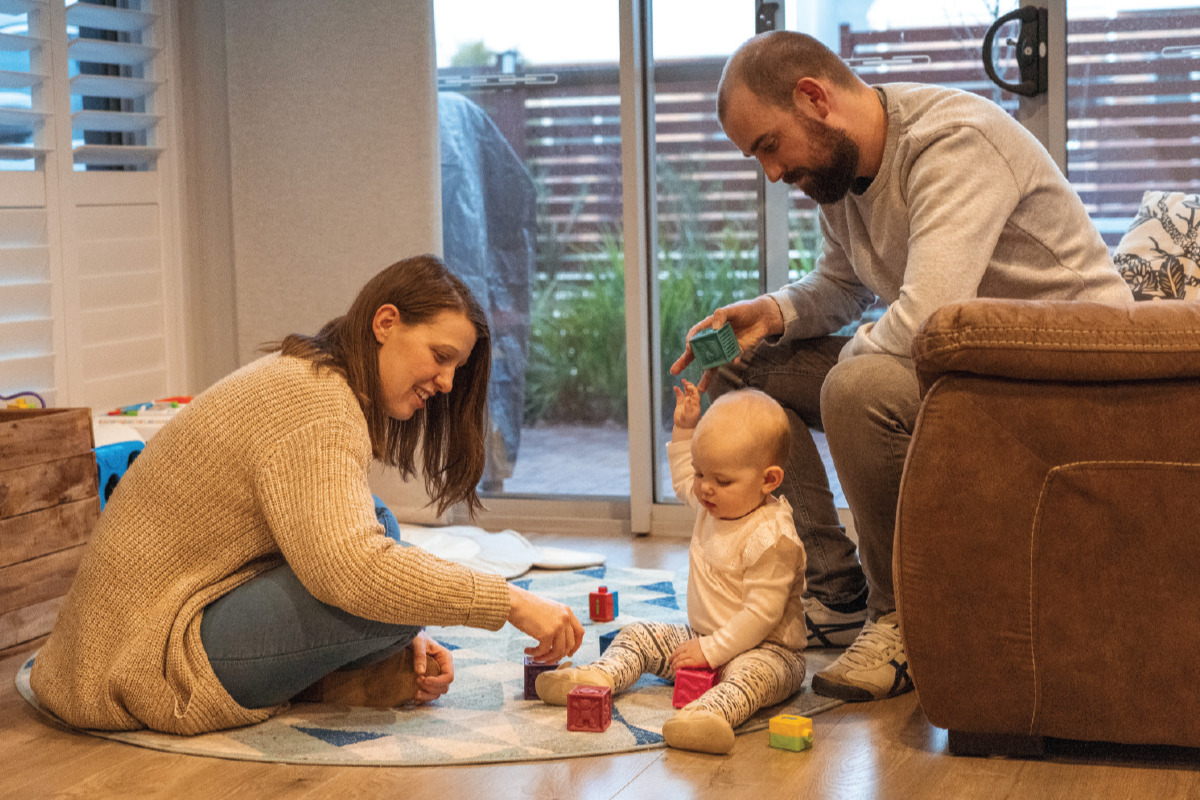
Simone, Matt & Isobel
The first reason we decided to look into Ginninderry was because of the Flexi-living Homes they had on offer, which provided us with an affordable option. However, once we did more research about Ginninderry, it began to tick all the boxes for us. Because the homes are sustainably built we are saving on things like our electricity bill. We love the location and having views of the Brindabellas from our doorstep. And most important for us is the community. We are fortunate to have such lovely neighbours and an abundance of other young families living close by.

Shakeela, Humza, Abdullah & Ibrahim
When we immigrated to Australia in 2017, we were lucky enough to arrive in Canberra just as the Ginninderry project was launching, with the first ballot for the Flexi-living Homes drawn in April. Having only just arrived, we didn’t know much about the housing market, but when we compared Ginninderry to other options, we really felt very lucky that we decided to buy here. We loved that we could buy an affordable brand-new modern house in a brand-new suburb. We also love the fact that our home is energy efficient, that we have a separate land title and that we have a great community, the backdrop of mountains and plenty of space for kids to play.
